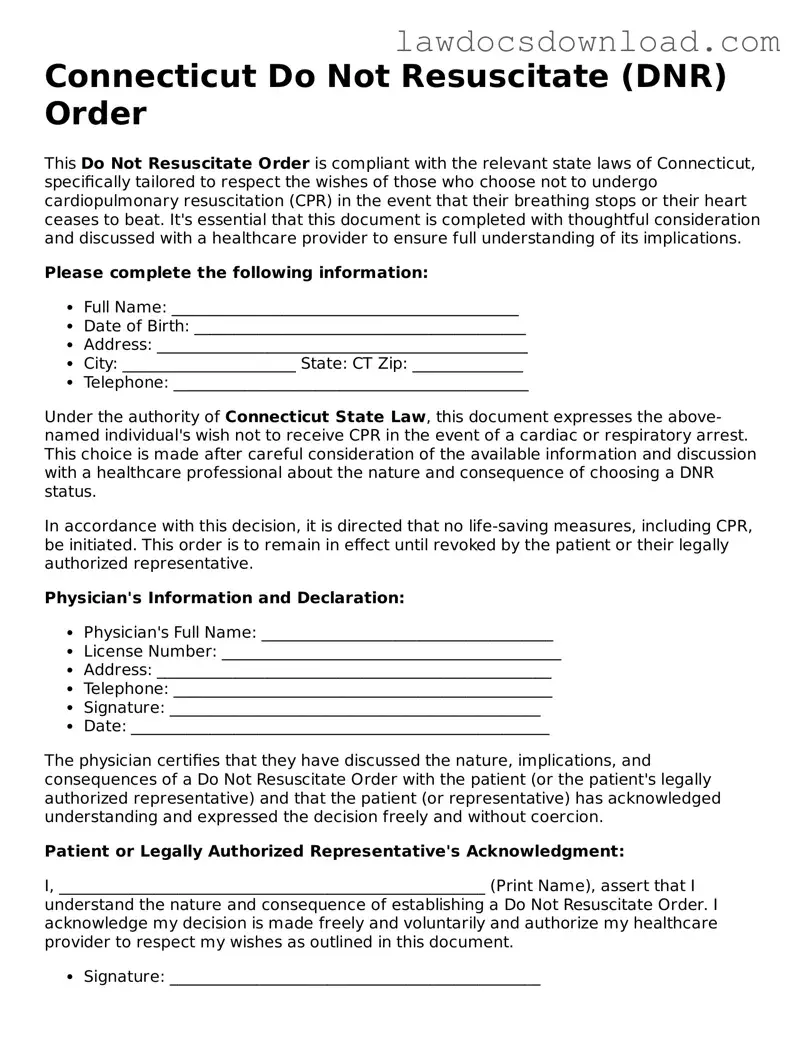Connecticut Do Not Resuscitate (DNR) Order
This Do Not Resuscitate Order is compliant with the relevant state laws of Connecticut, specifically tailored to respect the wishes of those who choose not to undergo cardiopulmonary resuscitation (CPR) in the event that their breathing stops or their heart ceases to beat. It's essential that this document is completed with thoughtful consideration and discussed with a healthcare provider to ensure full understanding of its implications.
Please complete the following information:
- Full Name: ____________________________________________
- Date of Birth: __________________________________________
- Address: _______________________________________________
- City: ______________________ State: CT Zip: ______________
- Telephone: _____________________________________________
Under the authority of Connecticut State Law, this document expresses the above-named individual's wish not to receive CPR in the event of a cardiac or respiratory arrest. This choice is made after careful consideration of the available information and discussion with a healthcare professional about the nature and consequence of choosing a DNR status.
In accordance with this decision, it is directed that no life-saving measures, including CPR, be initiated. This order is to remain in effect until revoked by the patient or their legally authorized representative.
Physician's Information and Declaration:
- Physician's Full Name: _____________________________________
- License Number: ___________________________________________
- Address: __________________________________________________
- Telephone: ________________________________________________
- Signature: _______________________________________________
- Date: _____________________________________________________
The physician certifies that they have discussed the nature, implications, and consequences of a Do Not Resuscitate Order with the patient (or the patient's legally authorized representative) and that the patient (or representative) has acknowledged understanding and expressed the decision freely and without coercion.
Patient or Legally Authorized Representative's Acknowledgment:
I, ______________________________________________________ (Print Name), assert that I understand the nature and consequence of establishing a Do Not Resuscitate Order. I acknowledge my decision is made freely and voluntarily and authorize my healthcare provider to respect my wishes as outlined in this document.
- Signature: _______________________________________________
- Date: _____________________________________________________
- Relationship to Patient (if not the patient): ____________________
This document is legally binding and must be presented to and followed by healthcare providers tasked with the care of the patient in emergency situations where the patient is unable to communicate their wishes. This DNR Order does not impact the provision of other medical care, including pain relief, nutrition, or other comforts.
It is the patient's responsibility or that of their legally authorized representative to notify healthcare providers of the existence of this DNR Order and to present it upon request.
